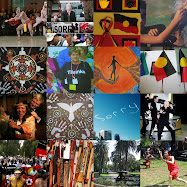 Nathaniel Bateman was the commander of the Northumberland, and as a young naval officer, Captain James Cook sailed as master under Bateman's command, charting the St Lawrence River in Canada.
Nathaniel Bateman was the commander of the Northumberland, and as a young naval officer, Captain James Cook sailed as master under Bateman's command, charting the St Lawrence River in Canada. In 1770, Cook sailed along this coast, past tall cliffs broken by inlets lined with white, or golden sandy beaches. In places the trees almost reached (and some still do) the waters edge. Then this bay, its entrance guarded by two small islands, and the mouth of a large river. Cook remembered his commader on the Northumberland, and named the bay after him - Bateman Bay. In time it became Batemans (no apostrophe these days, though it once did!)
The river was named the Clyde (probably after the Scottish river of that name) by another explorer, Robert Johnston, in 1821. The bridge, which opens to allow taller vessels through, was built in 1956. Before that you had to wait for a ferry to cross the river.
After a history of timber-cutting and milling, and fishing, and a small, isolated population through much of the 20th century, Batemans Bay became a popular tourist and holiday resort, at first mainly for Canberrans - this stretch of coast is sometimes called 'The Capital Coast' in reference to the number of Canberrans; and latterly more Sydney-siders (though at 4+ hours drive, it is a bit more than a weekend destination for Sydney-siders). The permanent population is 16 000, and the summer and easter hordes many times that. Yet, it's still a pretty calm and tranquil place, the crowds in the shopping centre on an overcast January day (stopping them going to one of the fabulous beaches in the area) notwithstanding.
For more pics of Batemans Bay and the surrounding area, click here.




Lovely and the water looks so clear.
ReplyDelete